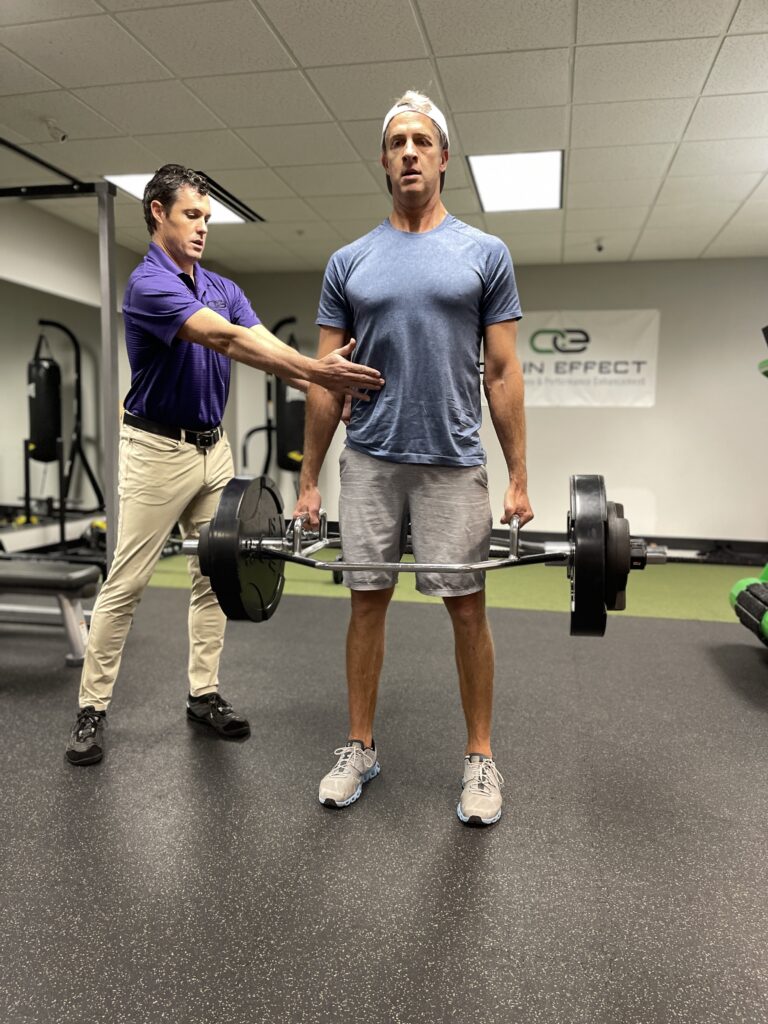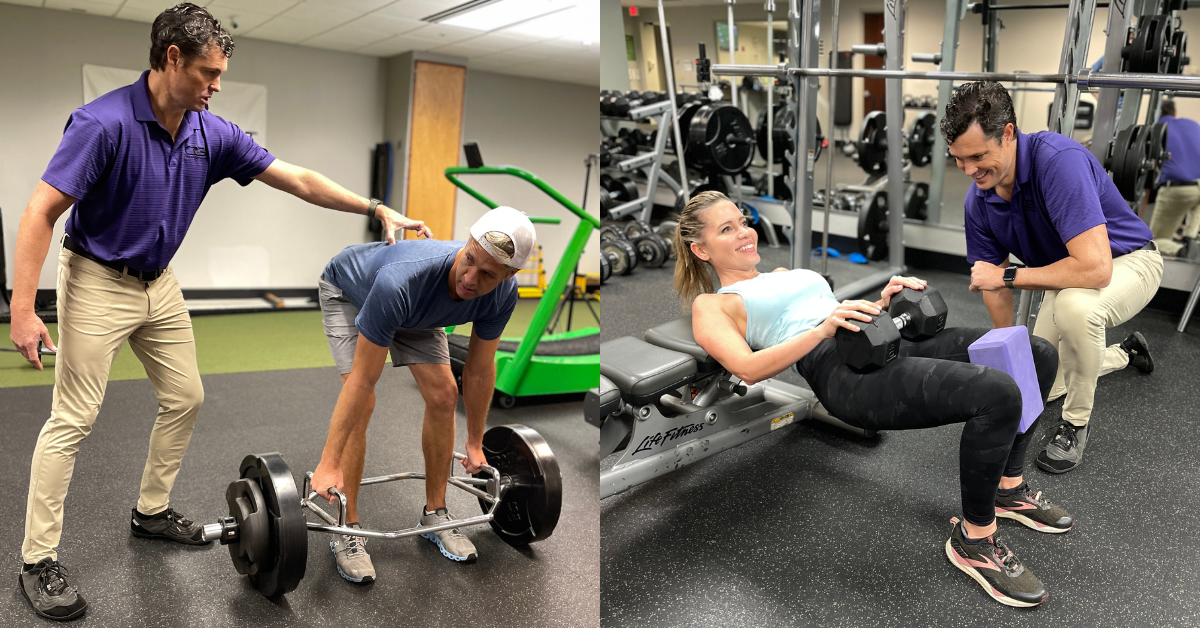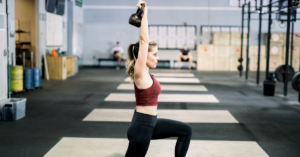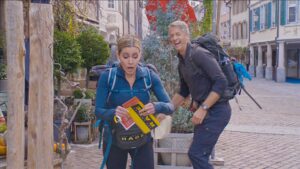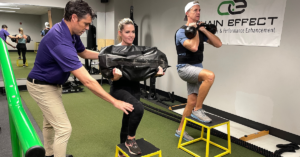We all know how important it is to build strength, especially as we age. In my 20s, I would run six miles a day but I couldn’t do more than a few push-ups without reaching exhaustion. Though I’ve tried to add strength to my workout routine, I became incredibly motivated when we found out we were going to be on The Amazing Race.
This show would require a lot of running but there are always challenges that require beyond average strength. It’s never as simple as a bicep curl or a weighted squat, it’s the random tasks like paddling a kayak solo (Penn got a hernia so I had to row most of the trip upstream by myself) or spending hours flipping heavy stones.
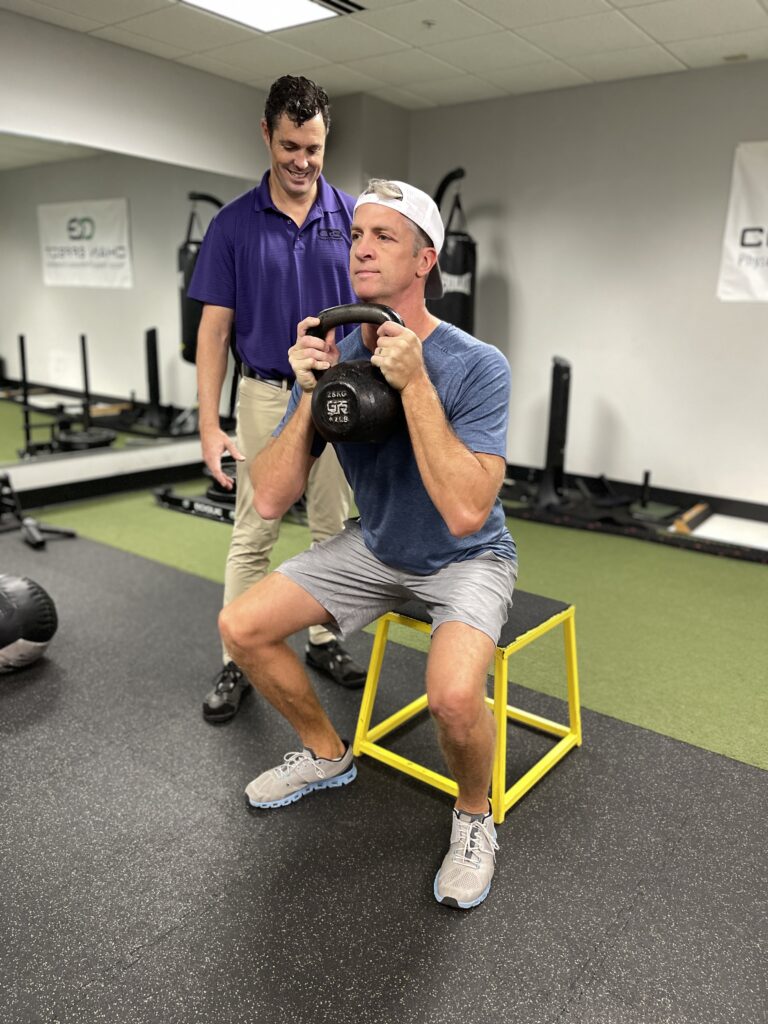
We wanted to be ready for these functional strength moves and did our best to prepare in a gym setting. We are still doing these workouts to be prepped for those daily tasks like carrying in bags of groceries or lifting heavy boxes of Christmas ornaments to haul them up to the attic. Real life requires strength and here’s how the team at Chain Effect helps us build ours.
This is the third installment in a series about how we got in shape for The Amazing Race.
Here’s Taylor Pope, DPT, FDNP, Owner of Chain Effect to share this workout with you!
Foundational Strength Training
This week’s workout is all about strength and pattern development. If you tuned in to the podcast, you heard us discuss primal or fundamental movement patterns.
These patterns are:
- Hip Hinge – deadlifts, hip thrusters, swings
- Knee Hinge – squats, lunges, step ups
- Pushes –
- vertical: military press, push press, landmines
- horizontal: push ups, dumbbell press, bench press
- Pulls –
- vertical: pull ups, lat pull downs
- horizontal: bent over rows, seated rows
- Rotation – medicine ball throws, windmills, side plank transitions
- Anti Rotation – plank pass throughs, pallof presses, farmer carries
- Dynamic – sled pushes/pulls, crawling, jumping, running, climbing
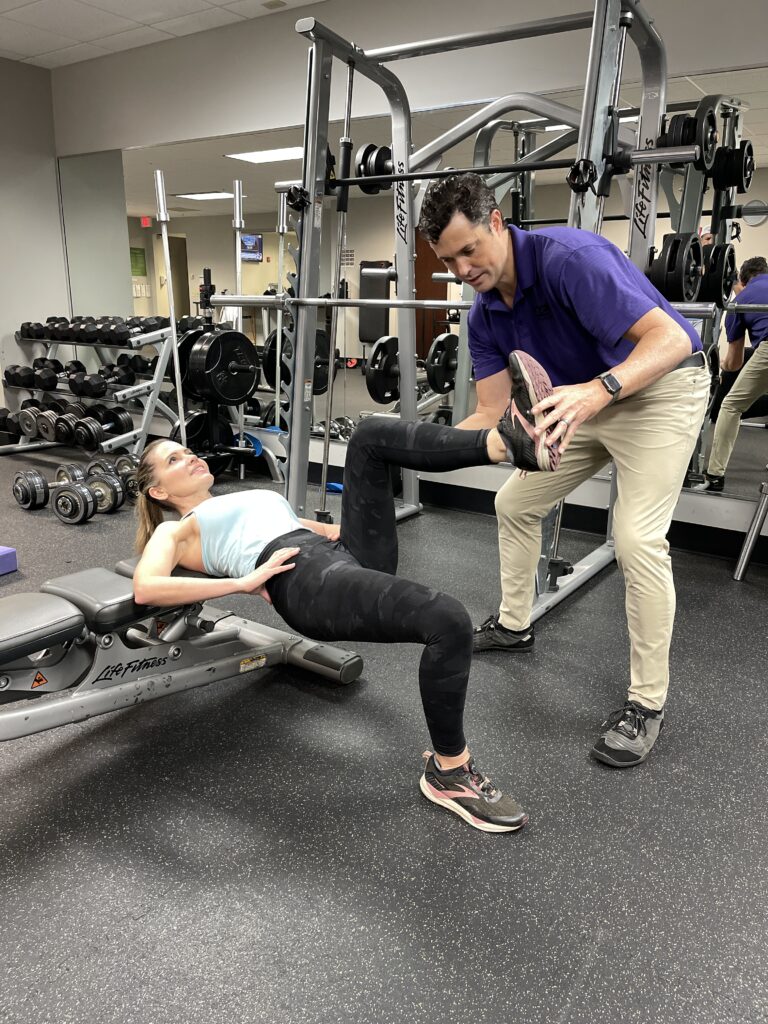
The rationale for doing pattern based training is three fold:
- They maximize recruitment of many muscles, both stabilizers and movers, versus isolating just a couple of muscles like a bicep curl.
- By focusing on the quality of these “elemental” or “building block” movements, then adding strength to them, we improve neuromuscular complex activities such as running, jumping, crawling, and climbing.
- The demands of these specific patterns organize our spine and core which decreases injuries during training.
For this workout we are going to select two hip hinges, two knee hinges, a push and a pull, and finish with rotation/anti-rotation exercises. These are best performed at the gym, but, if working out at home, light dumbbells or gallons of water can be substituted for the heavier weight options.
Check out our video for technique tips and cues for proper form.
The Workout
2 super sets each performed 2-3 times:
Set A:
- Deadlift, 10 reps
- Pull Ups or Assisted Pull Ups, 10 reps
- Goblet Squat, 10 reps
- Side Plank Switches (10 second side plank, switch sides without dropping, then hold 10 seconds, repeat 3 times)
Set B:
- Hip Thruster, 10 double leg squeezing block then 6 single leg per side
- Push Ups, 10 reps
- Split Squat, 10 reps per leg
- Plank Shoulder Taps, 20 taps
Here is Part 1 and Part 2 of our workout series in case you missed them.
